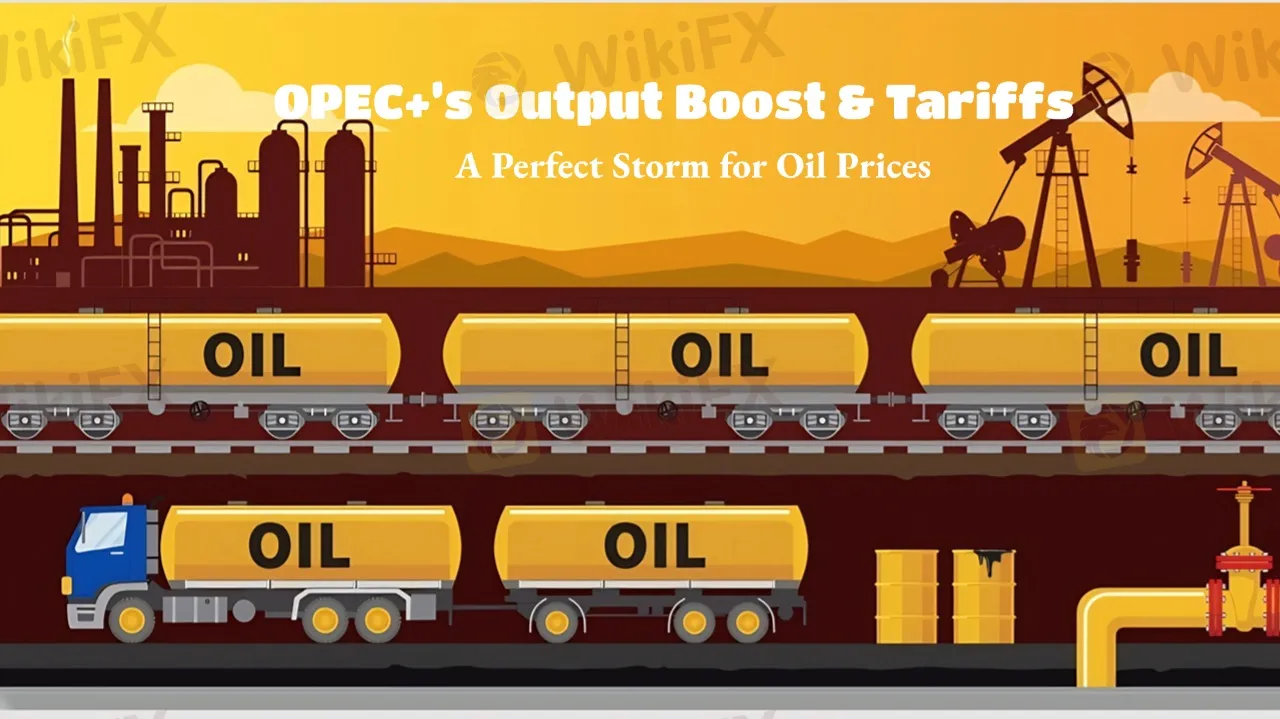简体中文
繁體中文
English
Pусский
日本語
ภาษาไทย
Tiếng Việt
Bahasa Indonesia
Español
हिन्दी
Filippiiniläinen
Français
Deutsch
Português
Türkçe
한국어
العربية
OPEC+’s Output Boost & Tariffs: A Perfect Storm for Oil Prices
Abstract:Oil prices have been on a continuous decline, and with the combined pressure of OPEC+ production increases and tariff policies, the downward trend may persist in the short term.

On March 4, Brent crude briefly fell below the $70 mark for the first time since October last year, while WTI crude dropped below $67, hitting a three-month low.
During Mondays meeting, OPEC+ announced its first crude oil production increase since 2022, planning to raise output by 138,000 barrels per day starting in April.
This decision signals a gradual rollback of the groups previous policy, which had reduced daily production by six million barrels to stabilize the market. This move is expected to further weaken oil price support and heighten the risk of supply-demand imbalances.
Beyond the pressure from increased production, trade policies are also adding to market uncertainty. The Trump administration has imposed a 25% tariff on goods from Mexico and Canada, while raising tariffs on Chinese goods to 20%.
This decision has fueled fears of an escalating global trade war, which could dampen energy demand and exert additional downward pressure on oil prices.
Amid deteriorating supply-demand dynamics, market expectations for oil prices remain pessimistic. Citi forecasts that Brent crude prices may decline toward $60 per barrel over the next three months. Goldman Sachs analysts also warn that with higher-than-expected crude supply, slowing U.S. economic activity, and demand contraction due to escalating tariffs, oil prices face significant downside risks.
Disclaimer:
The views in this article only represent the author's personal views, and do not constitute investment advice on this platform. This platform does not guarantee the accuracy, completeness and timeliness of the information in the article, and will not be liable for any loss caused by the use of or reliance on the information in the article.
Read more

Rising Tensions Push Oil Prices Higher
Fresh Middle East conflict sends shockwaves through energy markets.

Why Your Stop Loss Keeps Getting Hit & How to Fix It
Many new traders run into the same frustrating problem. They analyse the market, place a trade, and watch the price go against them just enough to hit their stop loss. Then, like a bad joke, the price moves exactly in their predicted direction. Read this article to learn how to fix this issue for good!

Safe-Haven Surge: Gold Shines Amid Market Turmoil
Rising geopolitical tensions fuel a flight to safety, propelling gold past key resistance and positioning it as a top-performing asset in today’s volatile market.

Forex Trading Challenges in India
Explore this guide to understand the challenges that deter India's forex market from unleashing its true potential.
WikiFX Broker
Latest News
Why Your Stop Loss Keeps Getting Hit & How to Fix It
IronFX Review 2025: Is This Broker Trustworthy or a Scam?
Exclusive Markets MT4 and MT5 Review 2025
Rising Tensions Push Oil Prices Higher
Oil price trends are worrying, and the market faces multiple challenges.
Currency Calculator


